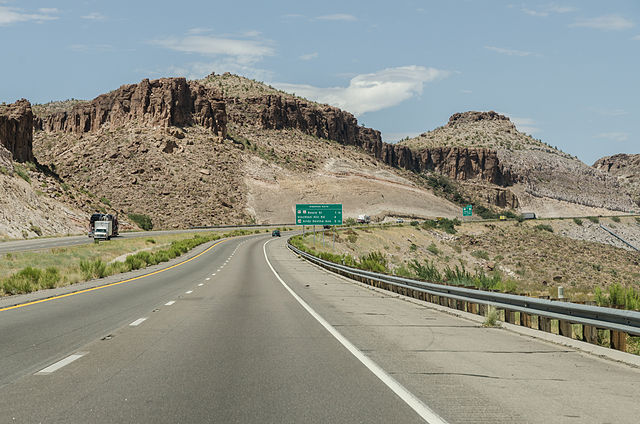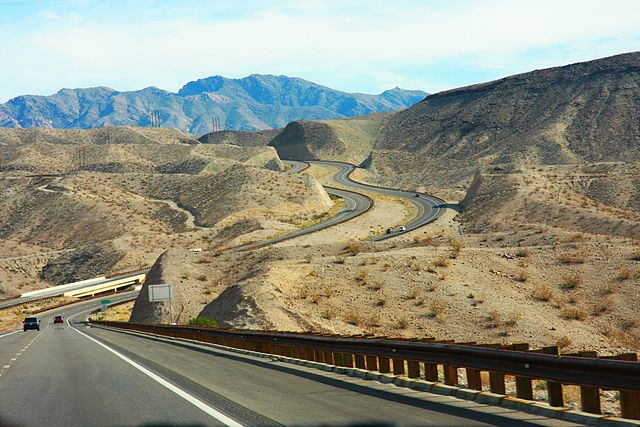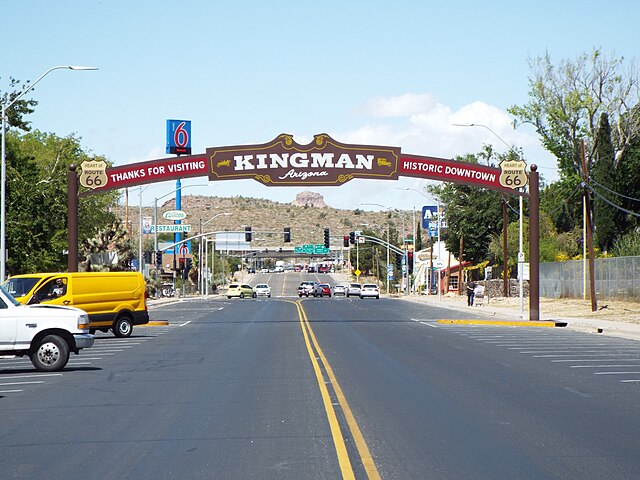Nestled in the heart of Arizona’s high desert, Kingman offers a unique weather experience that sets it apart from other desert cities. Whether you’re planning a visit to this historic Route 66 town or considering making it your home, understanding Kingman’s weather patterns is essential for making the most of your time in this remarkable location.
Understanding Kingman’s Desert Climate
Kingman sits at an elevation of approximately 3,300 feet above sea level, which significantly influences its climate patterns. Unlike the scorching heat of Phoenix or Tucson, Kingman enjoys a high desert climate that brings more moderate temperatures and distinct seasonal variations. This elevation creates what meteorologists call a “semi-arid” climate, characterized by hot summers, mild winters, and relatively low humidity throughout the year.
The city’s position in northwestern Arizona means it experiences weather patterns influenced by both the Sonoran Desert and the Great Basin Desert. This unique geographic location creates a microclimate that’s surprisingly diverse, offering residents and visitors a pleasant alternative to the extreme heat found in lower desert regions.
Spring Weather in Kingman (March – May)
Perfect Temperatures and Blooming Landscapes
Spring in Kingman is nothing short of magical. As winter’s grip loosens, the high desert transforms into a vibrant landscape painted with wildflowers and comfortable temperatures. March typically sees daytime highs ranging from the mid-60s to low 70s Fahrenheit, while nighttime temperatures hover in the 40s. This temperature range creates perfect conditions for outdoor activities without the intense heat that characterizes summer months.
April brings some of the most pleasant weather you’ll find anywhere in Arizona. Daily highs climb into the comfortable 70s and low 80s, while evenings remain cool enough to enjoy a sweater or light jacket. The desert comes alive during this time, with cacti blooming and wildlife becoming more active after the cooler winter months.
Spring Weather Patterns and What to Pack
May serves as the bridge between spring’s mild temperatures and summer’s intensity. Expect daytime temperatures in the 80s and 90s, with nighttime lows still dropping into the 50s and 60s. This significant temperature variation is characteristic of desert climates and makes layered clothing essential for spring visits.
Spring also brings the year’s windiest conditions to Kingman. The collision of different air masses creates breezy days that can reach sustained winds of 15-25 mph, with gusts occasionally exceeding 40 mph. While these winds can be strong, they help keep temperatures comfortable and create dramatic cloud formations against the desert sky.
Summer Weather in Kingman (June – August)
Hot Desert Days: Temperature Extremes
Summer in Kingman means embracing the desert heat, but with important distinctions from lower elevation Arizona cities. June kicks off the hot season with daytime temperatures typically reaching the mid to upper 90s, while July and August see the mercury climb into the 100s. However, Kingman’s elevation provides a crucial advantage – temperatures rarely exceed 105°F, making it significantly cooler than Phoenix or Las Vegas.
The key to understanding Kingman’s summer weather lies in its diurnal temperature variation. While days can be quite hot, nighttime temperatures often drop 30-40 degrees, providing welcome relief. Summer nights in Kingman typically see temperatures in the 60s and 70s, allowing for comfortable sleeping conditions and evening outdoor activities.
Monsoon Season: Arizona’s Summer Surprise

Arizona’s monsoon season, typically running from July through September, brings dramatic changes to Kingman’s weather patterns. These aren’t the gentle, steady rains you might expect from the word “monsoon.” Instead, Arizona monsoons deliver intense thunderstorms with heavy rainfall, lightning, and occasionally hail.
During monsoon season, afternoon and evening thunderstorms can develop rapidly, bringing sudden drops in temperature and spectacular lightning displays. While these storms are often brief, they can produce significant rainfall in short periods, sometimes leading to flash flooding in low-lying areas and washes.
Staying Cool During Kingman Summers
The dry desert air works in your favor during Kingman summers. Low humidity levels mean that even hot temperatures feel more comfortable than humid climates. Sweat evaporates quickly, providing natural cooling, though this also means staying hydrated becomes crucial. The intense sun at this elevation requires sun protection, but the lack of humidity makes outdoor activities more bearable than in many other hot climates.
Fall Weather in Kingman (September – November)
The Golden Season: Why Fall is Perfect
Many locals and visitors consider fall to be Kingman’s finest season. September begins the transition from summer heat, with temperatures starting in the 90s but gradually cooling as the month progresses. The monsoon season typically ends in September, bringing clearer skies and lower humidity levels.
October delivers some of the most perfect weather imaginable. Daytime temperatures settle into the comfortable 70s and 80s, while nighttime lows drop into the 40s and 50s. The desert landscape takes on golden hues as vegetation prepares for winter, creating stunning photographic opportunities and ideal conditions for hiking and outdoor exploration.
Outdoor Activities and Fall Weather
November continues the trend of excellent weather, with daytime highs in the 60s and 70s and nighttime temperatures often dropping into the 30s and 40s. This is prime time for camping, hiking, and exploring the numerous outdoor attractions around Kingman. The weather is stable, with very low precipitation chances and abundant sunshine.
Fall also brings some of the clearest skies of the year to Kingman. The reduction in atmospheric moisture and dust creates exceptional visibility, making it an ideal time for photography and stargazing. The lack of light pollution in the surrounding desert areas makes Kingman an excellent location for astronomical observation.
Winter Weather in Kingman (December – February)
Mild Winters: A Desert Advantage
Winter in Kingman offers a pleasant respite from the harsh winters found in many parts of the United States. December through February sees daytime temperatures typically ranging from the 50s to low 60s, with nighttime lows often dropping into the 20s and 30s. While these temperatures require warm clothing, they’re far milder than what most northern cities experience.
The winter sun in Kingman is particularly enjoyable. Clear, sunny days are common, and the low angle of the winter sun provides warmth without the intensity of summer radiation. This makes outdoor activities comfortable during the day, even when morning and evening temperatures are quite cool.
Occasional Snow and Cold Snaps
While rare, Kingman does occasionally experience snow and freezing temperatures. The city’s elevation makes it susceptible to winter storms that typically bypass lower desert areas. Snow usually falls once or twice per winter, though accumulations are generally light and melt quickly once the sun appears.
Cold snaps can bring nighttime temperatures into the teens and single digits, particularly during clear, calm nights when radiational cooling is most effective. These extreme cold events are typically brief, lasting only a few nights before temperatures moderate.
Winter Activities in Kingman
Winter’s mild daytime temperatures make it an excellent time for outdoor activities that might be uncomfortable during summer months. Hiking trails are less crowded, and the clear air provides excellent visibility for sightseeing. The nearby Hualapai Mountains often receive snow, creating opportunities for winter recreation just a short drive from town.
Monthly Weather Breakdown
Understanding Kingman’s weather month by month helps in planning visits and activities. January averages highs in the mid-50s with lows in the upper 20s. February sees slight warming with highs in the low 60s. March brings the beginning of spring with highs in the upper 60s and lows in the upper 30s.
April continues the warming trend with highs in the mid-70s, while May heats up significantly with highs reaching the mid-80s. June marks the beginning of summer heat with highs in the mid-90s. July and August are the hottest months, with highs typically in the upper 90s to low 100s.
September begins the cooling trend with highs in the low 90s, while October brings delightful temperatures in the upper 70s. November continues cooling with highs in the mid-60s, and December rounds out the year with highs in the mid-50s.
Annual Weather Statistics and Records

Kingman’s weather records paint a picture of a climate with distinct seasons and occasional extremes. The highest temperature ever recorded in Kingman was 111°F, while the lowest was -16°F. These extremes demonstrate the range of weather conditions possible, though such temperatures are rare.
Annual precipitation in Kingman averages around 9 inches, with most rainfall occurring during the winter months and monsoon season. The city enjoys approximately 310 sunny days per year, making it one of the sunniest places in the United States. Wind speeds average 8-10 mph throughout the year, with spring months experiencing the strongest winds.
Weather-Related Safety Tips for Kingman
Living in or visiting Kingman requires awareness of desert weather hazards. Summer heat can be dangerous, particularly for those not accustomed to high temperatures. Always carry water when outdoors, wear appropriate sun protection, and avoid strenuous outdoor activities during the hottest parts of summer days.
Flash flooding during monsoon season poses another risk. Desert washes can fill rapidly during thunderstorms, creating dangerous conditions for hikers and drivers. Never attempt to cross flowing water in washes, as the current can be much stronger than it appears.
Winter visitors should be prepared for occasional cold snaps and the possibility of snow. While rare, these conditions can catch unprepared visitors off guard. Always check weather forecasts before outdoor activities and carry appropriate gear.
Best Times to Visit Kingman Based on Weather
The optimal time to visit Kingman depends on your preferred activities and weather tolerance. Spring (March-May) and fall (September-November) offer the most comfortable temperatures for outdoor activities and sightseeing. These seasons provide warm days, cool nights, and minimal precipitation.
Summer visitors should be prepared for heat but can enjoy monsoon storms and dramatic skies. Winter offers mild temperatures perfect for those escaping harsh northern winters, though visitors should be prepared for occasional cold snaps and the small possibility of snow.
Climate Change Impact on Kingman Weather

Like many desert regions, Kingman is experiencing gradual changes in weather patterns. Temperature records show a trend toward warmer average temperatures, particularly nighttime lows. The timing and intensity of monsoon seasons have also shown some variability in recent decades.
These changes affect everything from water resources to outdoor recreation planning. However, Kingman’s high desert climate remains relatively stable compared to other regions, maintaining its characteristic seasonal patterns and temperature ranges.
Conclusion
Kingman, Arizona offers a unique weather experience that combines the best aspects of desert living with the moderation that comes from higher elevation. The city’s climate provides four distinct seasons, each with its own character and advantages. From the perfect temperatures of spring and fall to the dramatic monsoons of summer and the mild winters, Kingman’s weather patterns create an environment that’s both challenging and rewarding.
Whether you’re planning a visit to explore Route 66 history, considering a move to escape harsh winters, or simply curious about high desert climates, Kingman’s weather offers something for everyone. The key to enjoying this unique climate is understanding its patterns, preparing appropriately, and embracing the dramatic beauty that comes with living in one of America’s most distinctive weather environments.
Frequently Asked Questions
Q: What is the hottest month in Kingman, Arizona?
A: July is typically the hottest month in Kingman, with average high temperatures reaching the upper 90s to low 100s Fahrenheit. However, the city’s elevation keeps temperatures more moderate than lower desert areas.
Q: Does it snow in Kingman, Arizona?
A: Yes, Kingman occasionally receives snow, typically once or twice per winter. However, accumulations are usually light and melt quickly. The city’s elevation of 3,300 feet makes it more susceptible to winter weather than lower desert areas.
Q: What is monsoon season like in Kingman?
A: Monsoon season in Kingman runs from July through September, bringing afternoon and evening thunderstorms with heavy rain, lightning, and occasionally hail. These storms can be intense but are usually brief, providing dramatic weather displays and welcome relief from summer heat.
Q: When is the best time to visit Kingman for outdoor activities?
A: Spring (March-May) and fall (September-November) offer the most comfortable weather for outdoor activities. These seasons provide warm days, cool nights, and minimal precipitation, making them ideal for hiking, sightseeing, and exploring the area.
Q: How does Kingman’s weather compare to other Arizona cities?
A: Kingman’s higher elevation creates cooler temperatures year-round compared to Phoenix or Tucson. Summer highs rarely exceed 105°F, and winter temperatures are milder than northern Arizona cities like Flagstaff. The city experiences more temperature variation between day and night, typical of high desert climates.

